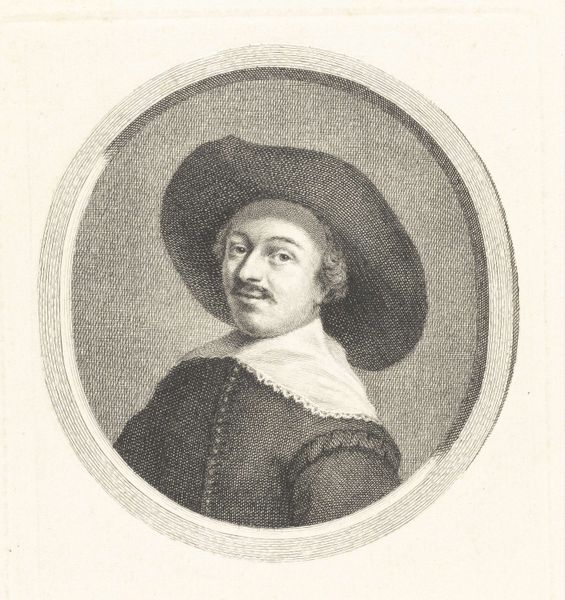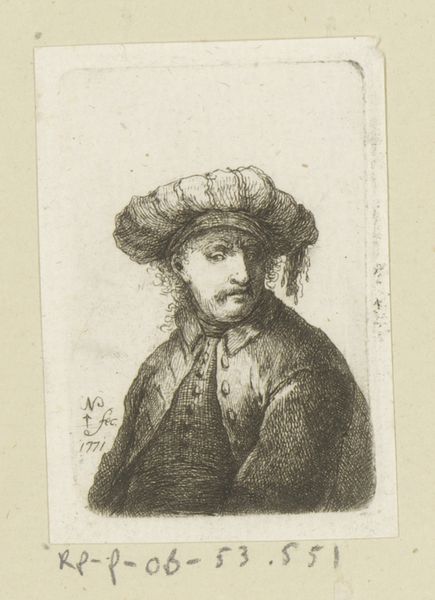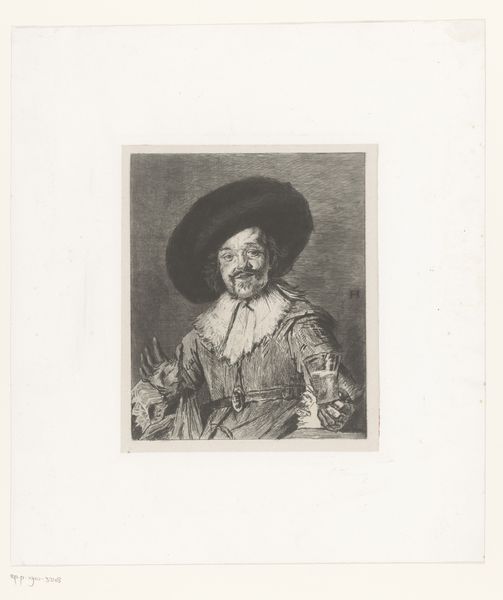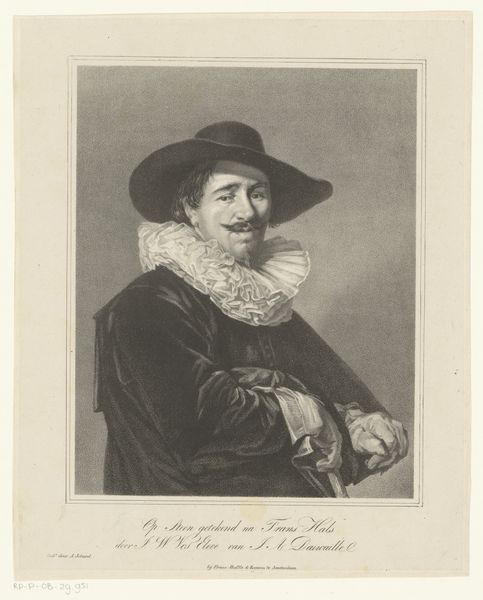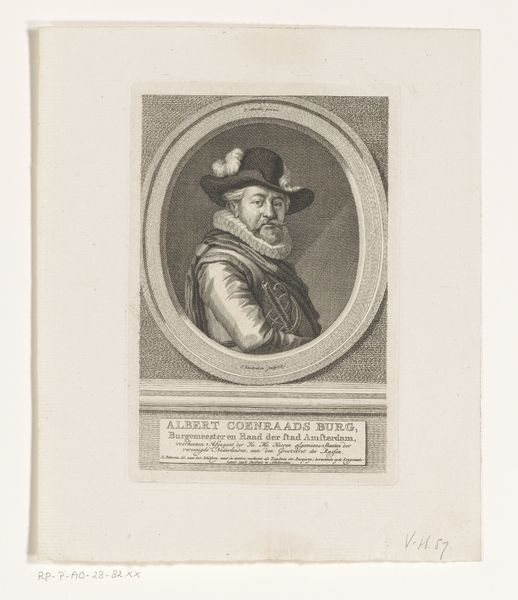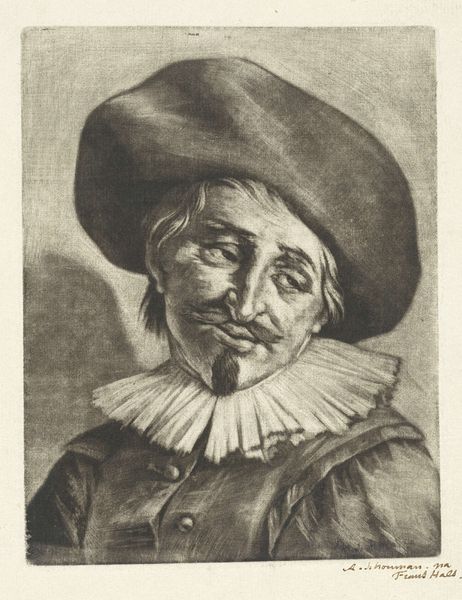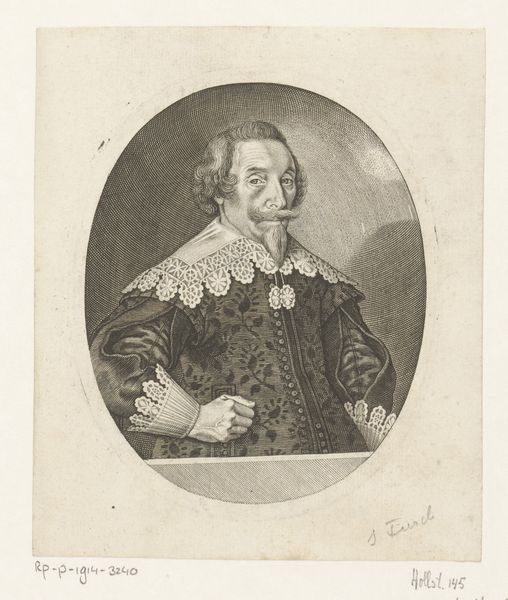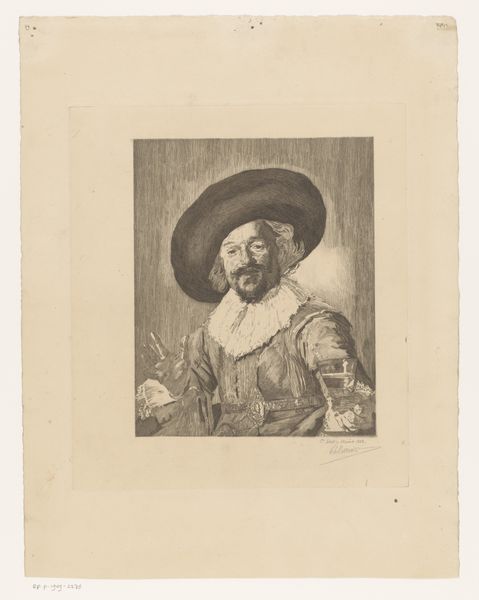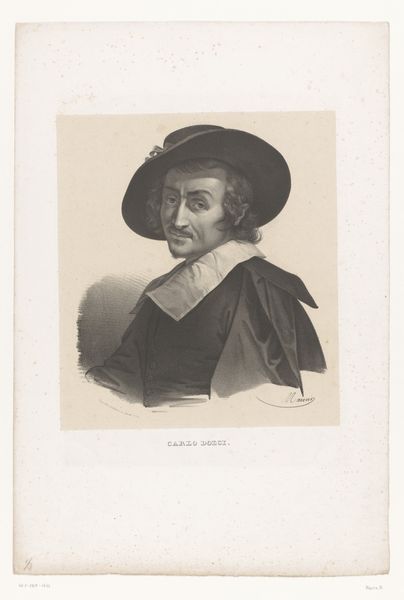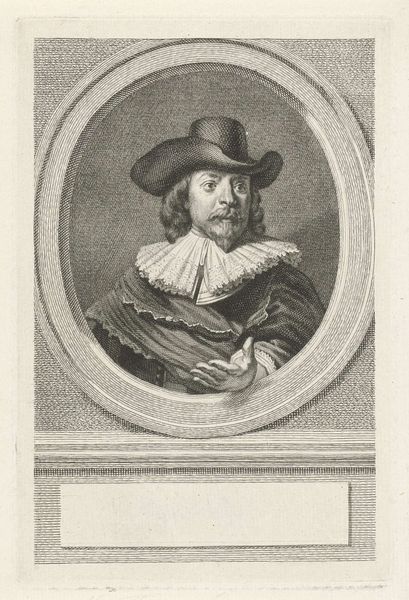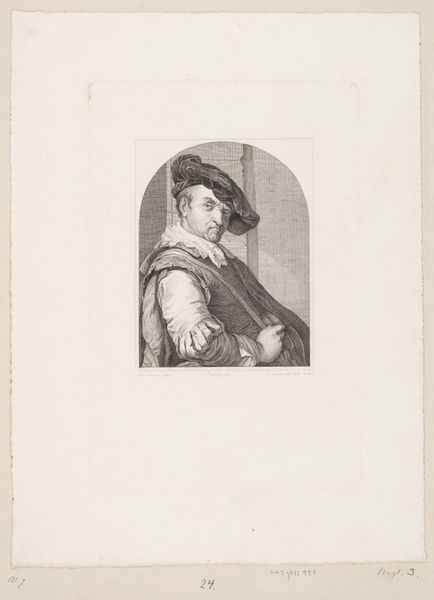
Dimensions: height 72 mm, width 57 mm
Copyright: Rijks Museum: Open Domain
Editor: Here we have Coenraad Hamburger's "Portret van Jan van der Heyden" created sometime between 1842 and 1843, an engraving of a portrait. The texture seems almost woven with such precise linework. What can you tell me about this engraving? Curator: The means of production is key. This engraving would have required specialized tools and skilled labor. Notice the layering of lines to create depth and shadow, achieved through meticulous craft. The artist is not merely depicting an image, but also displaying the material capabilities of the engraving process itself. How might the subject's status affect the artwork's value, historically and today? Editor: It's fascinating to consider the social context! Would Jan van der Heyden's profession or standing have elevated the engraving itself? Or perhaps popularized this medium and labor intensive engraving and drawing? Curator: Precisely. Van der Heyden was a notable figure, his portrait would have had inherent value, but this piece is itself a product of social dynamics and the economics of art production in that time. We must consider the distribution of this portrait: Was it for mass consumption or limited circulation? How did its accessibility impact the perception of both Van der Heyden and the artistic skill demonstrated? Think about the artist Hamburger himself; his status is elevated by reproducing Van der Heyden. Editor: It’s eye-opening to think about how deeply materials and production are tied to the subject and social structure. Curator: Indeed! By investigating these material aspects, we unravel the intricate layers of historical, social, and artistic value embedded within this seemingly simple portrait. These factors are not separable; the work cannot be fully appreciated until they are addressed.
Comments
No comments
Be the first to comment and join the conversation on the ultimate creative platform.
